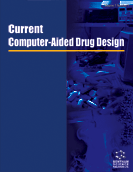Abstract
Cyclic adenosine diphosphoribose (cADPR) is an endogenous Ca2+ mobilizing nucleotide in many cell types and different species covering protozoa, plants and animals, including humans. cADPR is formed by ADP-ribosyl cyclases from nicotinamide adenine dinucleotide (NAD). Since at least some of the ADP-ribosyl cyclases are under the control of receptors for exogenous ligands, cADPR is regarded as a second messenger for Ca2+ signaling. The main intracellular target for cADPR is the ryanodine receptor, but it is unclear whether cADPR elicits Ca2+ release by direct binding or via a binding protein. Derivatives of NAD and cADPR are potent ADP-ribosyl cyclase inhibitors and cADPR antagonists. Since Ca2+ ions are regulators of many diverse cell functions, e.g. muscle contraction, secretion of neurotransmitters, hormones and enzymes, fertilization of oocytes, and lymphocyte activation and proliferation, the cADPR signaling pathway may become a valuable target for pharmaceutical intervention.
Keywords: cyclic adenosine diphosphoribose, adp-ribosyl cyclases, ryanodine receptor, lymphocyte activation
Current Medicinal Chemistry
Title: Biochemistry, Biology, and Pharmacology of Cyclic Adenosine Diphosphoribose (cADPR)
Volume: 11 Issue: 7
Author(s): Andreas H. Guse
Affiliation:
Keywords: cyclic adenosine diphosphoribose, adp-ribosyl cyclases, ryanodine receptor, lymphocyte activation
Abstract: Cyclic adenosine diphosphoribose (cADPR) is an endogenous Ca2+ mobilizing nucleotide in many cell types and different species covering protozoa, plants and animals, including humans. cADPR is formed by ADP-ribosyl cyclases from nicotinamide adenine dinucleotide (NAD). Since at least some of the ADP-ribosyl cyclases are under the control of receptors for exogenous ligands, cADPR is regarded as a second messenger for Ca2+ signaling. The main intracellular target for cADPR is the ryanodine receptor, but it is unclear whether cADPR elicits Ca2+ release by direct binding or via a binding protein. Derivatives of NAD and cADPR are potent ADP-ribosyl cyclase inhibitors and cADPR antagonists. Since Ca2+ ions are regulators of many diverse cell functions, e.g. muscle contraction, secretion of neurotransmitters, hormones and enzymes, fertilization of oocytes, and lymphocyte activation and proliferation, the cADPR signaling pathway may become a valuable target for pharmaceutical intervention.
Export Options
About this article
Cite this article as:
Guse H. Andreas, Biochemistry, Biology, and Pharmacology of Cyclic Adenosine Diphosphoribose (cADPR), Current Medicinal Chemistry 2004; 11 (7) . https://dx.doi.org/10.2174/0929867043455602
| DOI https://dx.doi.org/10.2174/0929867043455602 |
Print ISSN 0929-8673 |
| Publisher Name Bentham Science Publisher |
Online ISSN 1875-533X |
 10
10
- Author Guidelines
- Bentham Author Support Services (BASS)
- Graphical Abstracts
- Fabricating and Stating False Information
- Research Misconduct
- Post Publication Discussions and Corrections
- Publishing Ethics and Rectitude
- Increase Visibility of Your Article
- Archiving Policies
- Peer Review Workflow
- Order Your Article Before Print
- Promote Your Article
- Manuscript Transfer Facility
- Editorial Policies
- Allegations from Whistleblowers
- Announcements
Related Articles
-
Role of Gap Junction Channel in the Development of Beat-to-Beat Action Potential Repolarization Variability and Arrhythmias
Current Pharmaceutical Design Hypertension in Diabetes: Optimal Pharmacotherapy
Cardiovascular & Hematological Agents in Medicinal Chemistry Pharmacokinetic Features of the Antiparasitic Macrocyclic Lactones
Current Pharmaceutical Biotechnology Myalgic Encephalomyelitis: Symptoms and Biomarkers
Current Neuropharmacology Obstructive Sleep Apnea and Hypertension: A Bidirectional Causal Relation
Current Respiratory Medicine Reviews Serum N-terminal Pro-brain Natriuretic Peptide Level is Associated with the Development of Chronic Kidney Diseases in Patients with Type 2 Diabetes
Endocrine, Metabolic & Immune Disorders - Drug Targets Current Research on Opioid Receptor Function
Current Drug Targets Present Insights on Cardiomyopathy in Diabetic Patients
Current Diabetes Reviews Matrix Metalloproteinases as Drug Targets in Acute Pulmonary Embolism
Current Drug Targets Graphical Abstracts
Inflammation & Allergy - Drug Targets (Discontinued) Yoga can Alter the Autonomic Neural Activity: A Critical Analysis
Current Traditional Medicine 3D-QSAR CoMFA Study on Oxindole Derivatives as Cyclin Dependent Kinase 1 (CDK1) and Cyclin Dependent Kinase 2 (CDK2) Inhibitors
Medicinal Chemistry Neuro-Immune-Endocrine Mechanisms During Septic Shock: Role For Nitric Oxide in Vasopressin and Oxytocin Release
Endocrine, Metabolic & Immune Disorders - Drug Targets Critical Overview of Applications of Genetic Testing in Sport Talent Identification
Recent Patents on DNA & Gene Sequences Testosterone Deficiency in Male: A Risk Factor for Heart Failure
Endocrine, Metabolic & Immune Disorders - Drug Targets Endothelial Endocytic Pathways: Gates for Vascular Drug Delivery
Current Vascular Pharmacology Central Hemodynamics in Risk Assessment Strategies: Additive Value Over and Above Brachial Blood Pressure
Current Pharmaceutical Design Bioengineering RNA Silencing Across the Life Kingdoms
Recent Patents on Biotechnology Capsaicin Sensitive-Sensory Nerves and Blood Pressure Regulation
Current Medicinal Chemistry - Cardiovascular & Hematological Agents Resuscitation of the Newborn in the Delivery Room
Current Pediatric Reviews


























